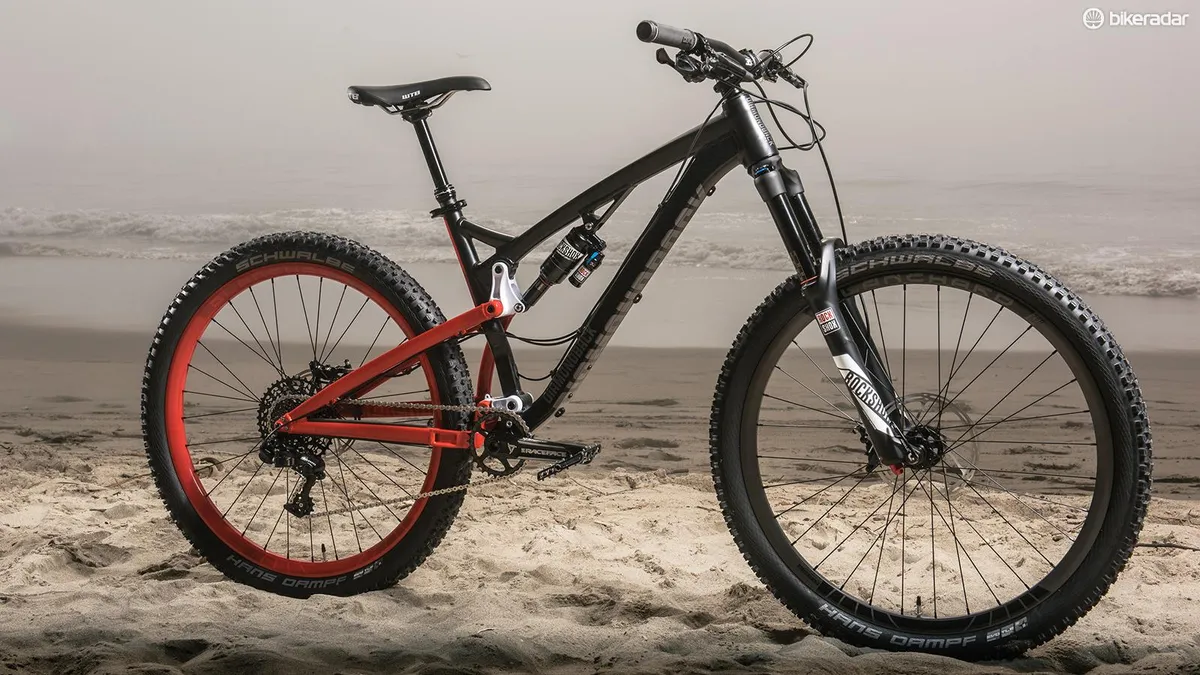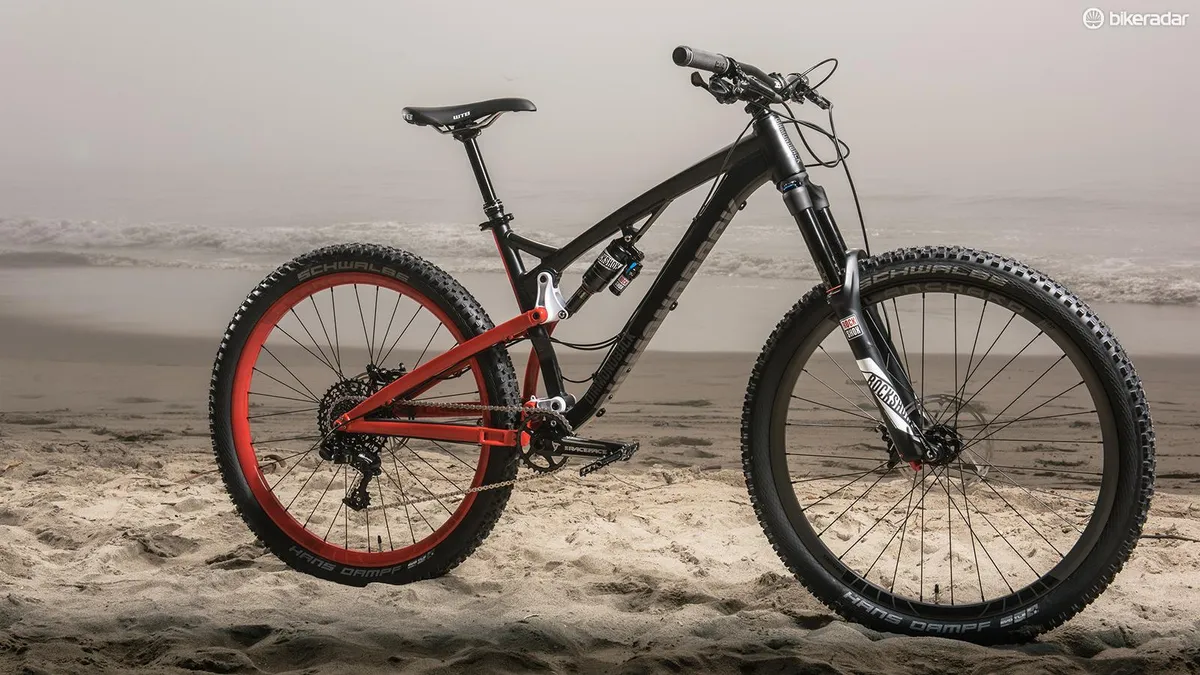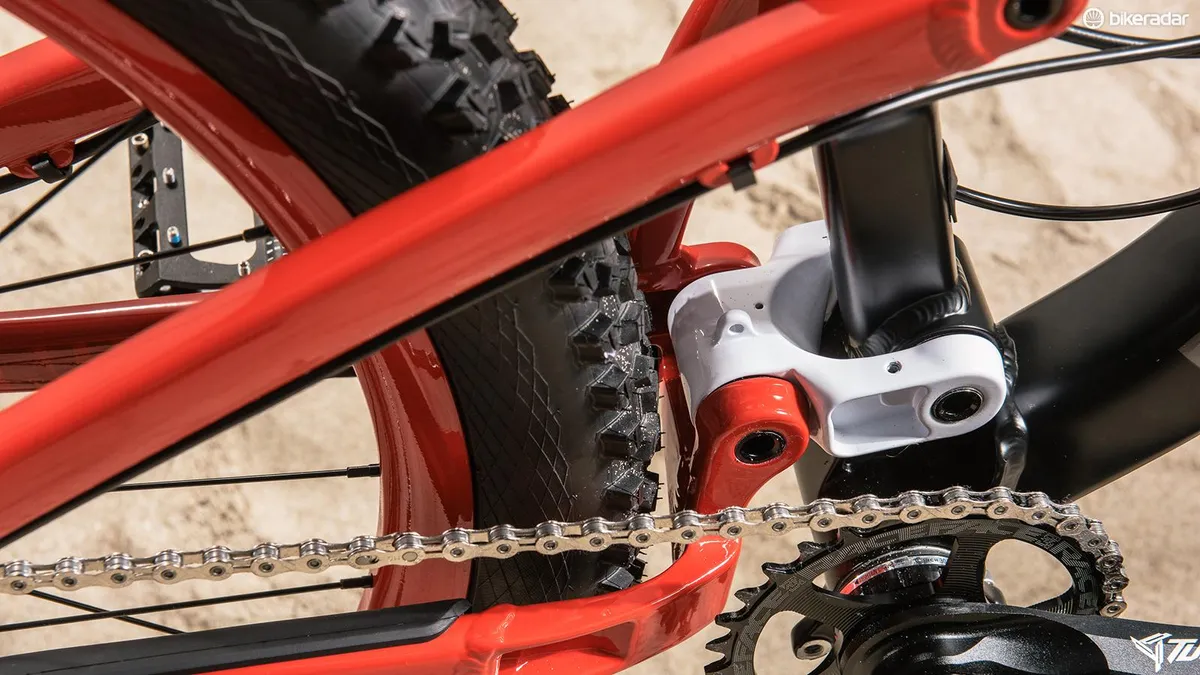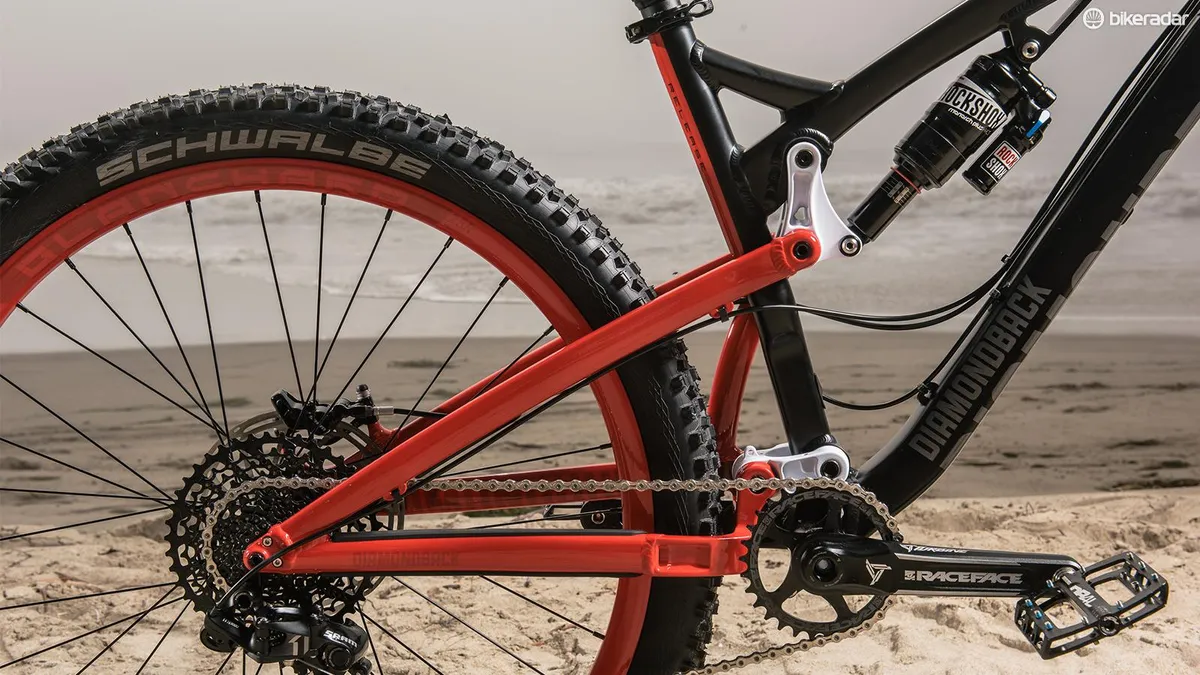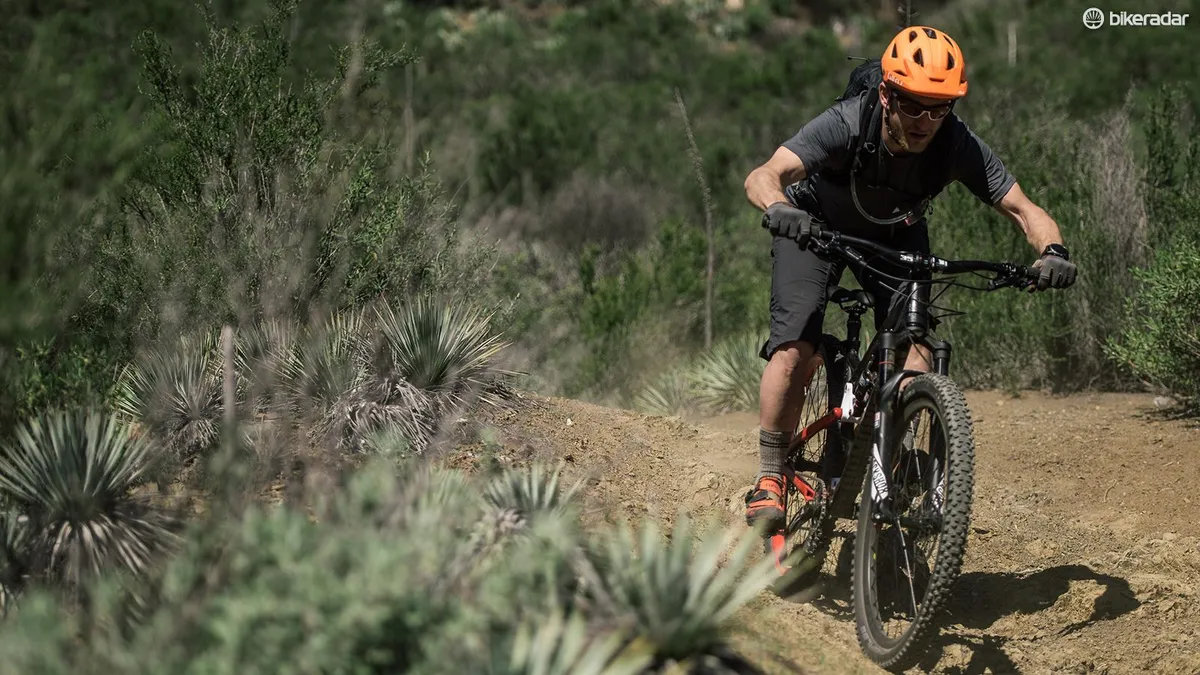Diamondback’s Release 3 is the top model in the company’s new line of 27.5in trail bikes. It has aggressive geometry and a dual-link suspension design that’s new to Diamondback, but might look familiar to seasoned riders.
Highlights
- 130mm rear travel
- Designed for 150mm forks
- 66-degree head tube angle
- 425mm chainstay length
- ‘Level Link’ suspension design
- 148x12mm thru-axle
- Available mid-March
- UK and Australian pricing and availability are yet to be announced
Backstory
The Release was in development for more than three years. Diamondback worked closely with its sponsored athletes, particularly with freerider Eric Porter, to refine the geometry and overall feel of the bike.
“I wanted something that was lighter and more agile, but still really capable. I don’t always need 160mm of travel for the trails I ride,” Porter said in comparing the Release to Diamondback’s all-mountain model, the Mission.
According to Diamondback, the Release’s alloy frame is nearly a full pound lighter than the 160mm-travel Mission.
On the level about Level Link
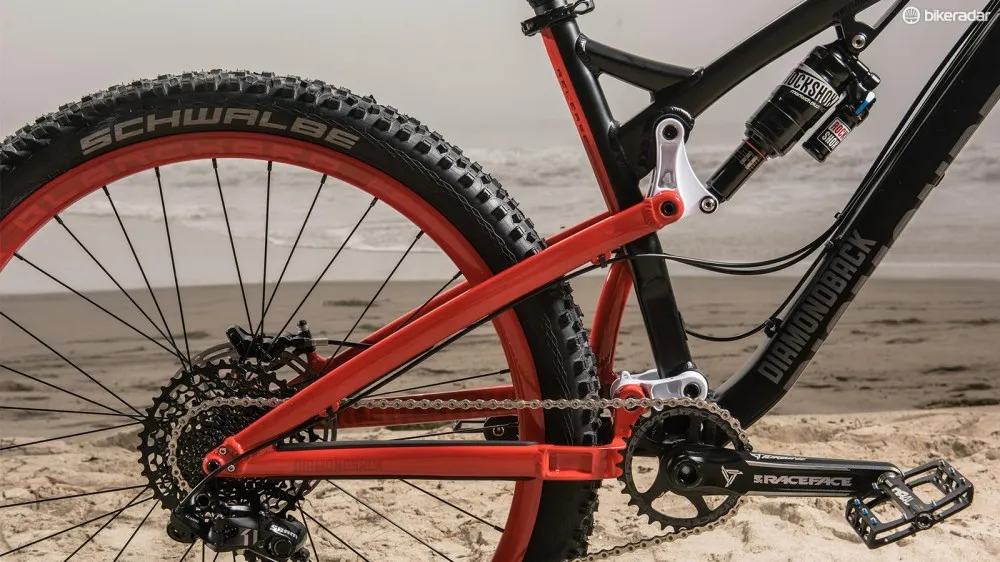
Hmm... these linkages look a bit familiar
“Derivative” is almost always used in the context of deriding another’s ideas or art as unoriginal. But is being derivative always such a bad thing when it comes to consumer products, such as a full-suspension mountain bike? After all, there are only so many ways to design an effective full-suspension linkage, and if a proven design is up for grabs, why not make it your own?
The patent covering the counter-rotating link design, originally developed by Outland in 1995 and subsequently purchased and employed by Santa Cruz on the majority of the company’s full-suspension models since 2001, expired in January of 2015. This means other companies are free to develop full-suspension mountain bikes that use counter-rotating linkages — VPP clones, if you will. Other brands can’t actually call the suspension design “VPP.” That term is still trademarked by Santa Cruz.
A number of companies jumped on the Horst-Link bandwagon when that patent expired, so it’s not surprising that Diamondback chose to employ a newly available counter-rotating link design for its new full-suspension line-up.
Diamondback calls its suspension design ‘Level Link’ in reference to the fact that the lower linkage remains roughly parallel with chain from the sag point through the remainder of the bike’s 130mm of travel.
A promising start
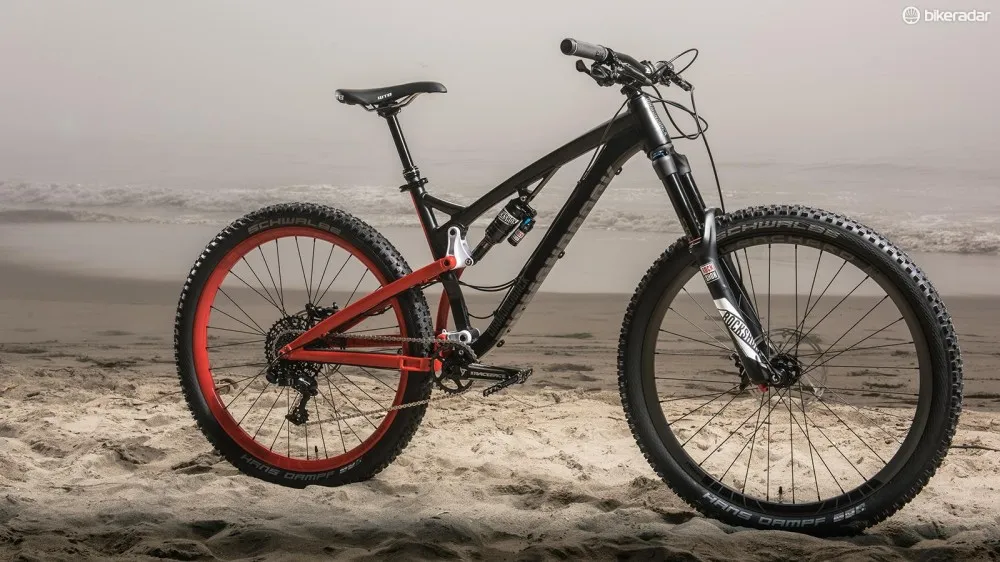
The Release 3 has 130mm of rear travel with a 150mm fork and a slack 66-degree head tube angle
I did two rides consisting of a total of 22 miles aboard the Release, so this is review is far from definitive. However, the trails I rode in the mountains above Santa Barbara, California, were varied and challenging enough that it provided a good preview of just how capable Diamondback’s latest trail bike is.
The handling of the Release is quite good. The 66-degree head tube angle inspires gravity-sled confidence when descending, but the short 425mm chainstays keep it from feeling like a plow bike. It’s quite nimble at speed; although the long and slack front end require extra muscle when slowly making headway on steep climbs.
So what about that suspension design? Instead of regurgitating a bunch of marketing-speak and questionable suspension diagrams I’ll cut straight to the chase. Quite unsurprisingly, the Level Link rear suspension feels and reacts much like Santa Cruz’ latest crop of trail bikes.
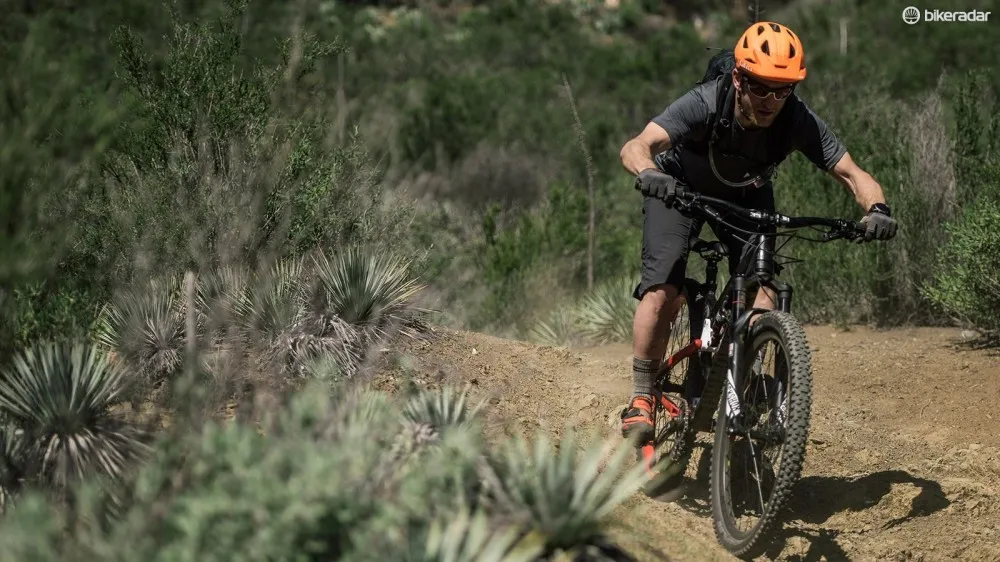
The brief testing period means this is far from conclusive, but the Release pedaled quite well and rode lighter than its actual weight suggests
The rear end is firm under pedaling with no discernible mid-stroke wallow. There’s ample traction, but it’s not exactly plush. The Release 3 rode lighter than its 30.9lb / 14kg heft might suggest. The rear suspension wasn’t particularly bothered by my out-of-the-saddle mashing on the way up. On the way down, the rear end has a poppy feel that makes it easy to boost the Release off rocks and pump through berms.
As the top bike in the three bike Release line, the Release 3 comes with a kit that balances performance with relative affordability. Top billing goes to the 150mm RockShox Pike RCT3 fork and Monarch Plus RC3 Debonair shock. SRAM’s Guide RS brakes are also outstanding. While not high-end, the SRAM X1 drivetrain is every bit as reliable as SRAM’s X01 group.
In addition to the mostly SRAM components, Diamondback steps in with a 35mm house-branded stem and 780mm-wide alloy handlebar. The Blanchard wheelset is also a Diamondback creation. The alloy rims have an internal width of 28mm, which seemed to suit the 27.5x2.35in Schwalbe Hans Dampf rubber they're wrapped in. The red rear rim is a bit jarring at first glance. It's easily mistaken for a mismatched replacement.
Mid-price malaise
This mix of high and mid-level componentry is expected on an alloy full-suspension rig that retails for $3,900. But this is a murky middle zone for potential buyers. This isn’t an indictment of a lack of value in the Release 3, but rather the reality of purchasing any mountain bike in this price range.
Is it better to invest in a carbon frame with entry-level components, or a heavier alloy frame that comes with a decent kit that needs very little upgrading? The answer may be different for each rider depending on his or her particular needs.
To use Santa Cruz as an example, the base model 5010c retails for several hundred dollars less than the Release 3. So prospective buyers get a light carbon frame with entry-level components. If you plan to upgrade as components wear out or as your budget permits, then perhaps carbon is the route to take. If you want to make one purchase and be done with it, or if you’re wary of carbon’s crash worthiness, then a well-specced alloy bike like the Release 3 might be the better option.
Verdict

The Release series of bikes does a good job of balancing performance with value
The Release 3 eats up rough terrain and is an intrepid climber in spite of its weight. Any of the three bikes in Diamondback’s Release line would be a good place to start for the rider looking to swap a hardtail for their first full-suspension mountain bike.
This particular model poses a question that is up to individual riders to decide: is it better to have a heavier alloy frame with higher-end components, or a lighter carbon frame with low-end kit?
Also consider:
Devinci Troy Carbon RS
With a new dual-link rear suspension, the Release is an efficient pedaling machine that's capable and agile on aggressive terrain. See our full Devinci Troy Carbon RS review.
Whyte T-130 C Works
This full carbon trail bike encourages riding on the limit with a great geometry, balanced suspension, and stiff carbon wheels. See our full Whyte T-130 C Works review.
